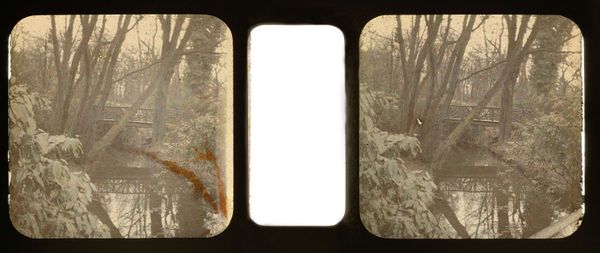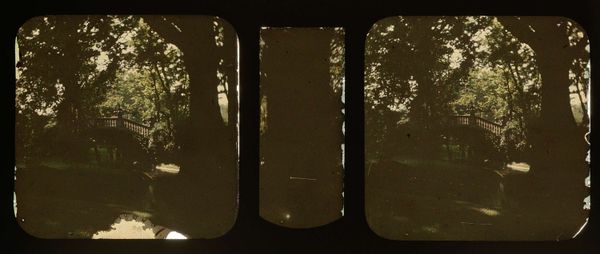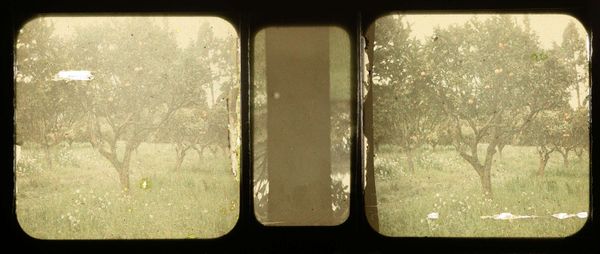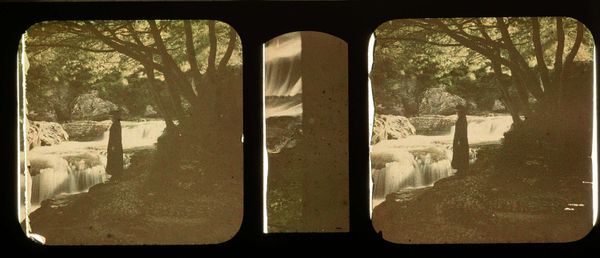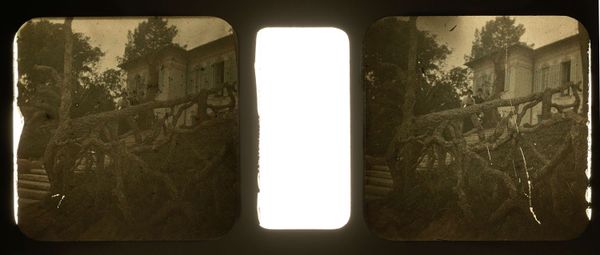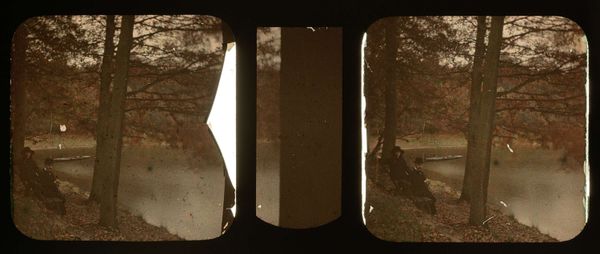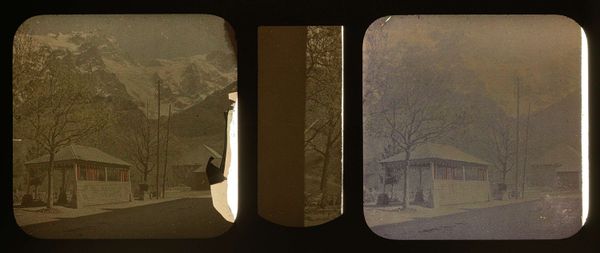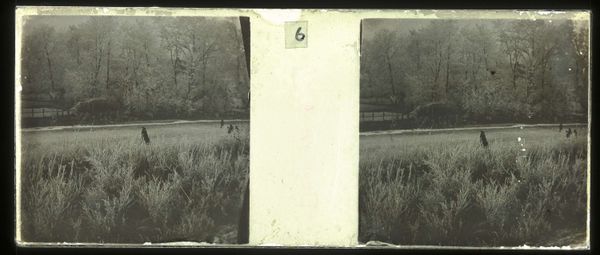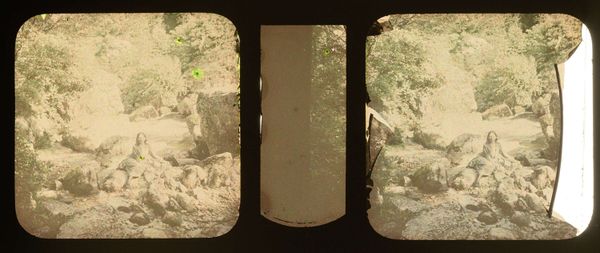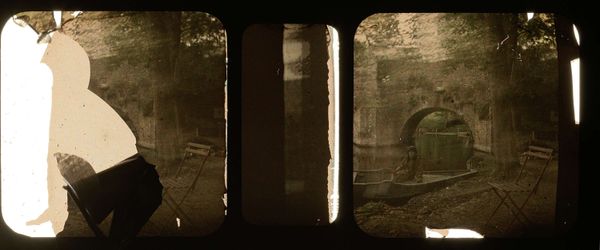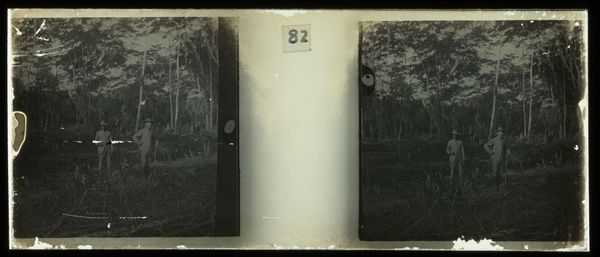
Dimensions: height 75 mm, width 150 mm
Copyright: Rijks Museum: Open Domain
Curator: This photograph, attributed to Adolphe Burdet, is called "Bloembedden in een tuin," or "Flower Beds in a Garden," and dates roughly between 1907 and 1935. Editor: Immediately, I'm struck by this feeling of nostalgic tranquility, like a perfectly preserved memory of a summer afternoon. The light feels soft, filtered, almost hazy, adding to that impression. Curator: Burdet's work often uses impressionistic techniques. Consider how he manipulates the photographic process to achieve a painterly effect. The softened focus, the carefully controlled light, the deliberate composition; it's not just a snapshot, but a constructed image designed to evoke a particular mood. Editor: Absolutely. I'm thinking about the labor behind creating this "impression." The manual work of planting those precise flower beds, of course, but also the photographer’s darkroom manipulations—the material acts of production—to generate such a desired effect on film. It obscures photography's role as mechanical reproduction, right? Curator: Perhaps, though it could be seen as emphasizing the hand of the artist even more, consciously shaping reality. Notice how the garden is laid out, leading the eye toward the implied promise of the residence, which suggests paradise in photographic form, maybe even longing for the peace that would prevail there? It evokes idealized versions of cultivated nature as symbols for order, prosperity and abundance. Editor: Order certainly! But I find myself dwelling more on the implicit social elements. Formal gardens, like these precisely arranged beds, often speak of class, leisure, of access to resources to both create and then contemplate this staged nature. Is it staged for Burdet or are they both the outside looking in, only recording such a state of constructed nature? Curator: An interesting point; the very act of capturing this scene does freeze a specific vision of societal status that prevails even today. The visual legacy that continues to reverberate! Editor: Definitely, reflecting about material resources in parallel. Now when I look at this print, it brings me a feeling of melancholic insight into past societies that is not without modern equivalents. Curator: A poignant observation. Thank you.
Comments
No comments
Be the first to comment and join the conversation on the ultimate creative platform.

